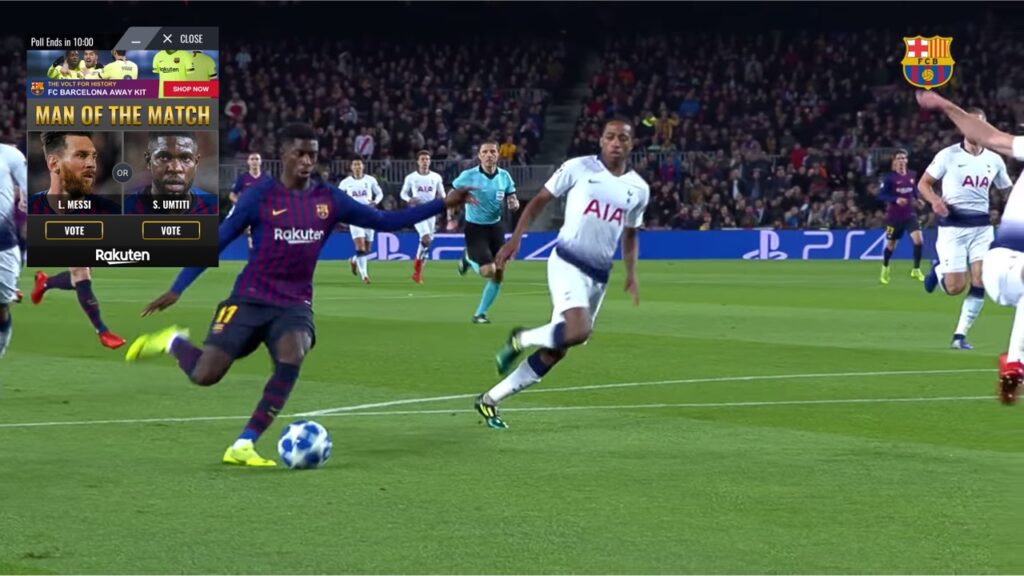
In today’s ever-changing world of technology, video is dominating both the entertainment and advertising space. With a plethora of content and multiple devices for audiences to choose from – from mobile to tablet, desktop to streaming video on televisions, it’s not what we watch but how we watch that really matters.
We spend more time on screens than ever before. On average, adults spend more than 11 hours per day watching, reading, listening to or simply interacting with online media. That’s up from nine and a half hours just four years ago. Mobile ‘phones’ are now immersive theatres, gateways to more streaming services than we could ever hope to subscribe to, all demanding our attention and our credit card details.
This presents vast challenges for businesses – how can broadcasters preserve and monetise audiences in this crowded market? If the evolution in how we watch has taught us anything, it is that it can’t be just about a glut of content. It has to be about how we engage with what we see. Increasingly, the audience wants to get up close and personal.
We’ve witnessed how the best streamers encourage interaction in the esports space, building connections with every transmission. The audience accepts personalised advertising and product placement all over the screen, absorbing it as part of the experience rather than a disruption. The abundance of visuals might seem excessive to some, but it doesn’t mean that the lesson doesn’t apply to other types of content or that other audiences don’t seek this level of information. How often do we watch sports or films while fact-checking or shopping with our phone in hand?
We spend more time on screens than ever before. On average, adults spend more than 11 hours per day watching, reading, listening to or simply interacting with online media
It is clear that the audience wants to engage but the difficulty lies in the solutions available. Current ads lack contextual relevance and timeliness, resulting in 65% of people skipping online video ads as soon as they get the chance. Most people skip ads out of habit, with 76% saying they do so because it’s ingrained behaviour. As a result, it is becoming increasingly difficult for businesses to establish the commercial performance of video advertising.
Making It Relevant
The power of video is growing by the day and those businesses who are not finding new ways to engage with consumers are missing a big opportunity. The ultimate goal of video advertising is to ensure a sale. Therefore, advertising has to speak to the consumer by offering something worthwhile – and that means targeting.
Advanced behavioural targeting uses information collected by the business to reach customers depending on their past online activity. This meaningful data will highlight if they are likely to be interested in a product, in addition to unveiling what users are considering purchasing. The success of video advertising relies on businesses utilising data-driven advanced behavioral techniques, to reach an engaged audience in a cost-effective manner.
Timing Is Critical
Relevance is hugely important, but video advertising also has to be timely. Timing can be defined in a number of ways. It can be just the right moment in a particular type of customer journey. Or the moment that the customer is ready for engagement. Businesses need to deliver the message at the critical juncture, in order to convert the impulse to purchase into a sale. Pre-roll and mid-roll don’t achieve that, they simply slot in before or during videos with no link to what the content is, or what the audience is experiencing. This is where augmented video advertising comes into play.

Augmented video ads offer the crucial directness of a call-to-action on the screen, at key moments in a drama or sports match, allowing businesses to grab the customer’s attention and drive higher click through rates. Ultimately, the call to action is more powerful when video advertising augments the experience rather than detracts from it.
Delivering Personalised Advertising
Consumers have divided attention – completing two or more tasks simultaneously across more devices than ever before – meaning only engaging and relevant video ads will command consumer attention. This is where impersonal programmatic advertising fails to make its mark. Consumers often feel alienated and force-fed content that they didn’t ask for. Many businesses offer a blanket solution that suffocates the consumer rather than entices them.

Businesses need to create content that will break through the noise and command their audience’s attention. Personalised video advertising can boost engagement three times more than the traditional ads. By utilising the data collected from behavioural targeting, business can personalise messages based on their audience’s browsing behaviour, location, time of day or demographic profile.
Changing The Future Of Advertising
Video has quickly become a natural part of a consumer’s online experience, with 78% of people watching videos every week, and 55% viewing online videos every day. Businesses can take this opportunity to create unique video ad content that engages with their audience as if it was content they had sought out specifically. While video advertising can be effective, savvy consumers have been exposed to so much video content that they are experts at recognising poor quality video ads.
Today, businesses need to go further than simply understanding customers: they should know what their customers want and need at specific points in the purchase journey. By understanding the specific context of the moments that matter, businesses can actively engage consumers who are increasingly harder to reach. Personalised advertising experiences with timely relevance, that prompt the right emotional reaction, are key to standing out from the crowd and creating a connection with the audience.
Ian Sharpe
Ian Sharpe, CEO, Promethean TV


